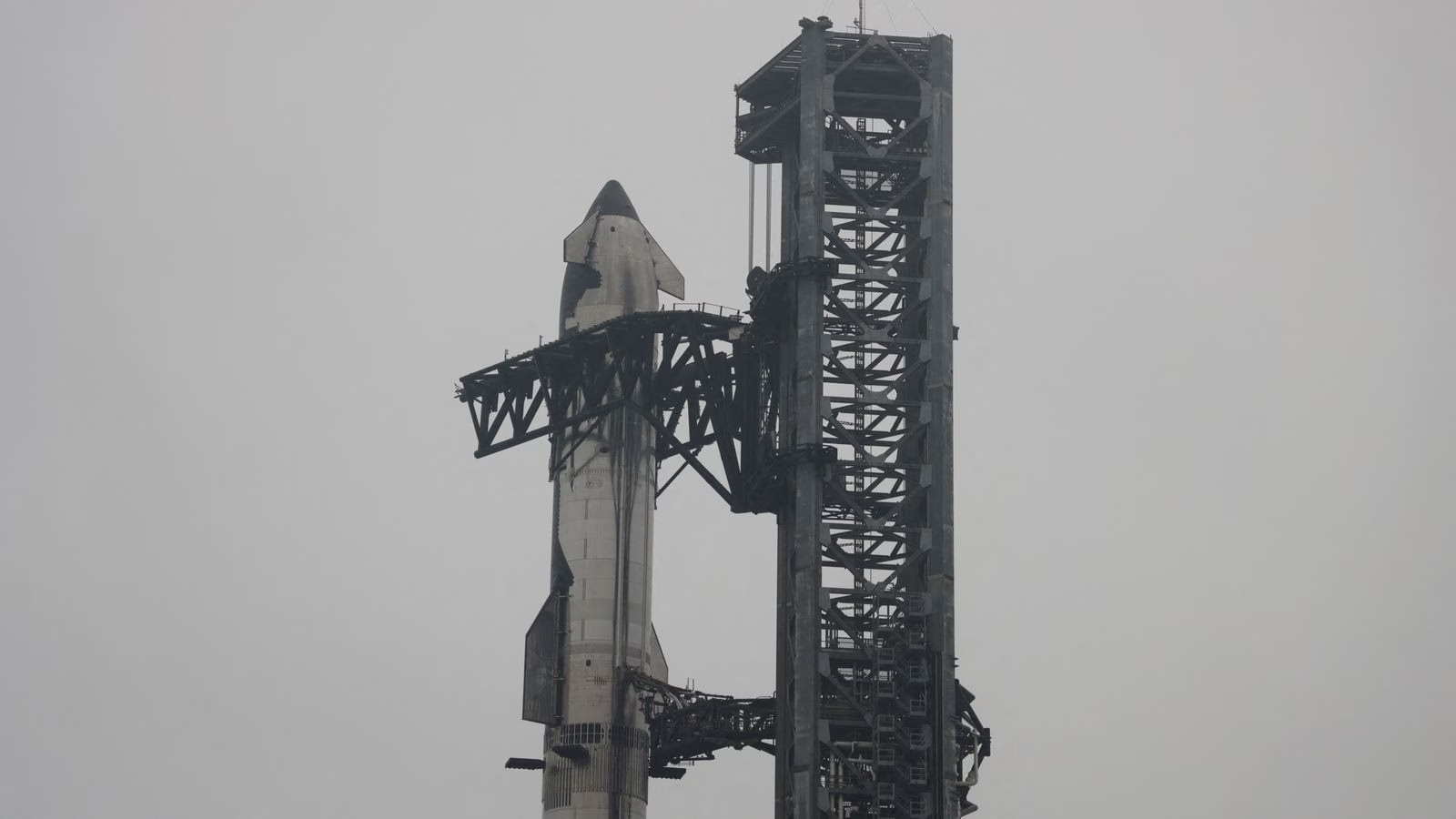In just two years’ time, the SpaceX Starship is set to land people on the moon – and if Elon Musk is to be believed, initiate a mission to Mars as well. However, it is a significant setback for the rocket to explode so dramatically – and publicly – for the second time in as many months.
Just nine-and-a-half minutes into test flight eight, contact was lost with the upper stage. A SpaceX livestream displayed the engines cutting out and the rocket veering out of control, followed by fiery debris scattering across the sky.

“Success comes from what we learn, and today’s flight will help us improve Starship’s reliability,” the company stated. Learning through failure is what drives SpaceX and its founder Elon Musk.
The company had already made design changes in response to the failure of test flight seven in January, which was due to vibrations stressing hardware in the propulsion system. The Federal Aviation Administration was satisfied with the engineering upgrades meeting safety requirements.
However, there has been another failure, and the company has begun a second investigation using video from inside the rocket and system data leading up to the explosion.
Starship is on an incredibly tight testing schedule, with flights due to increase this year, all increasingly ambitious. Each launch must be a success before humans can board. Furthermore, to reach the moon, the rocket will need to be refueled in Earth’s orbit, requiring multiple ‘tanker’ versions of Starship to be launched.
A safe landing on the moon’s south pole is far from guaranteed, and NASA, along with SpaceX, are racing against China for lunar resources. Elon Musk has also spoken about sending the first uncrewed Starships to Mars in 2027 and astronauts shortly after, but safety remains a paramount concern.
While there is a risk, like the Challenger and Columbia disasters, NASA is more risk-averse today. They kept astronauts Butch Wilmore and Suni Williams on the International Space Station instead of the malfunctioning Boeing spacecraft. The space agency will not put its astronauts on a rocket that isn’t ready, despite pressure to take risks and win the space race.
Just nine-and-a-half minutes into test flight eight, contact was lost with the upper stage. A SpaceX livestream displayed the engines cutting out and the rocket veering out of control, followed by fiery debris scattering across the sky.

“Success comes from what we learn, and today’s flight will help us improve Starship’s reliability,” the company stated. Learning through failure is what drives SpaceX and its founder Elon Musk.
The company had already made design changes in response to the failure of test flight seven in January, which was due to vibrations stressing hardware in the propulsion system. The Federal Aviation Administration was satisfied with the engineering upgrades meeting safety requirements.
However, there has been another failure, and the company has begun a second investigation using video from inside the rocket and system data leading up to the explosion.
Starship is on an incredibly tight testing schedule, with flights due to increase this year, all increasingly ambitious. Each launch must be a success before humans can board. Furthermore, to reach the moon, the rocket will need to be refueled in Earth’s orbit, requiring multiple ‘tanker’ versions of Starship to be launched.
A safe landing on the moon’s south pole is far from guaranteed, and NASA, along with SpaceX, are racing against China for lunar resources. Elon Musk has also spoken about sending the first uncrewed Starships to Mars in 2027 and astronauts shortly after, but safety remains a paramount concern.
While there is a risk, like the Challenger and Columbia disasters, NASA is more risk-averse today. They kept astronauts Butch Wilmore and Suni Williams on the International Space Station instead of the malfunctioning Boeing spacecraft. The space agency will not put its astronauts on a rocket that isn’t ready, despite pressure to take risks and win the space race.







